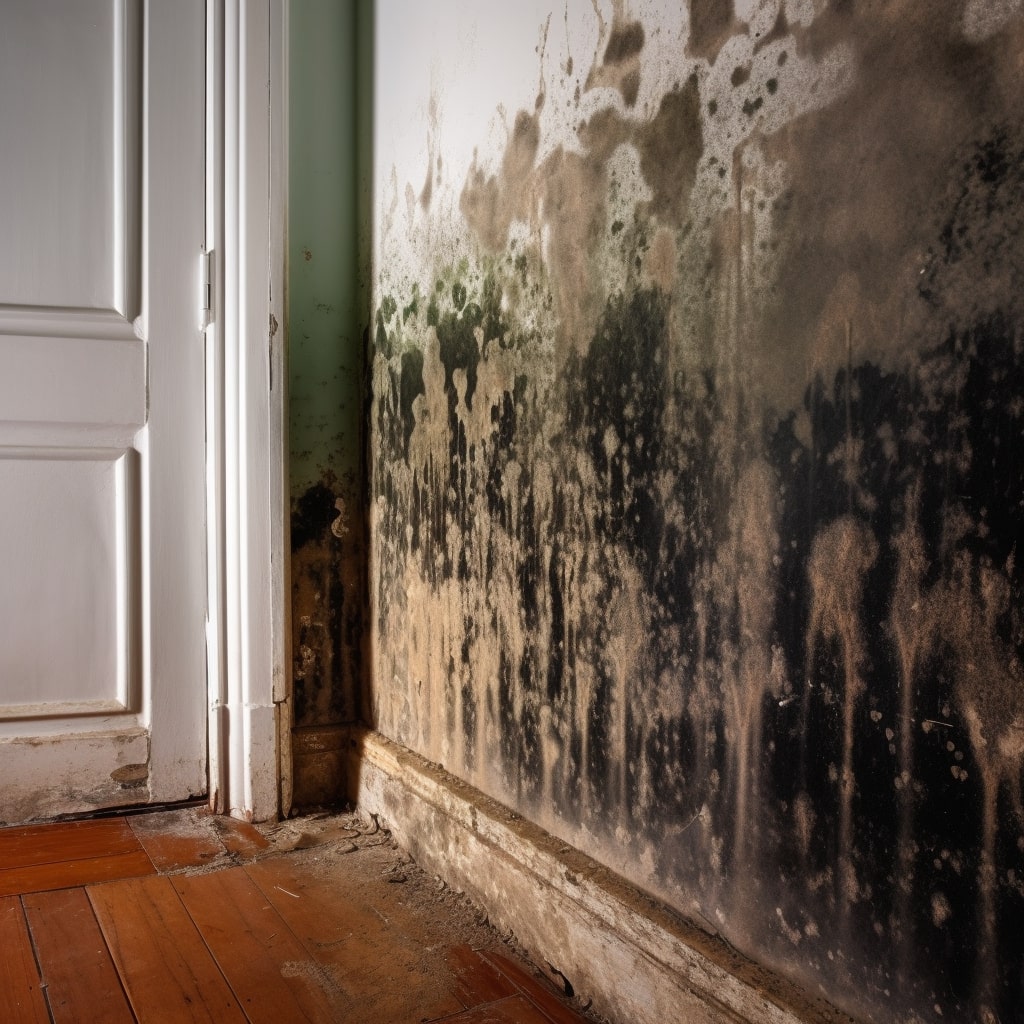This article provides a comprehensive analysis of the health risks associated with mold in residential settings. Mold proliferation in homes can have detrimental effects on respiratory health, particularly for individuals with pre-existing conditions or weakened immune systems.
This article also highlights vulnerable populations, common causes of mold growth, and preventive measures. It emphasizes the importance of professional mold removal services to effectively eradicate mold and address the root cause of the issue.
By understanding these risks and implementing proper preventive measures, homeowners can ensure a safe and healthy living environment for their families.
Health Risks of Mold Exposure
Exposure to mold can pose significant health risks, particularly for individuals with respiratory issues or compromised immune systems. Mold allergies can cause respiratory problems such as infections and asthma. Additionally, mold can trigger asthma attacks and worsen symptoms in individuals with pre-existing respiratory conditions.
People with skin sensitivities, such as eczema, may also experience adverse reactions to mold. It is important to note that individuals with weakened immune systems are at a higher risk of developing infections caused by mold exposure.
Vulnerable Populations and Mold Sensitivity
While mold sensitivity can affect individuals of all ages, certain vulnerable populations, such as infants, the elderly, and those with compromised immune systems, may be more susceptible to its adverse effects. These populations are at a higher risk of experiencing severe health issues due to mold exposure.
The long-term consequences of mold exposure can be particularly detrimental to these individuals, leading to respiratory issues and other health complications. Therefore, implementing prevention measures and maintaining a mold-free environment is crucial to safeguard the health of vulnerable populations.
Common Causes of Mold Growth
One of the primary catalysts for mold growth in the home is prolonged exposure to high levels of moisture.
Inadequate home maintenance, such as neglecting moisture control, ventilation systems, and plumbing repairs, can contribute to the growth of mold.
Additionally, poor building insulation can allow moisture to accumulate, creating the ideal environment for mold to thrive.
To prevent mold growth, it is crucial to address these issues through regular home maintenance and repairs, ensuring proper moisture control and ventilation systems.
Preventing Mold in the Home
To effectively prevent mold growth in the home, it is essential to implement proactive measures and maintain proper moisture control and ventilation. Here are three key strategies to prevent mold:
- Moisture control: Address any sources of water leaks or excessive moisture in the home, such as fixing plumbing issues or improving drainage systems.
- Proper ventilation: Ensure adequate airflow and ventilation throughout the house to reduce humidity levels and prevent stagnant air.
- Regular maintenance: Conduct routine inspections and repairs to identify and address any potential moisture problems or mold growth promptly.
The Importance of Professional Mold Removal
Professional mold removal is essential for ensuring the complete eradication of mold and addressing the underlying causes to prevent future mold issues.
Hiring professionals for mold remediation offers numerous benefits, including the use of industry-grade chemicals that effectively eliminate deeply embedded mold.
DIY methods may not effectively eliminate mold or prevent its spread, leading to long-term effects such as respiratory problems and weakened immune systems.
Additionally, professional mold removal services provide a safe and effective process, minimizing the risks associated with DIY mold removal attempts.
Tailored Solutions for Mold Decontamination
Effective and customized strategies are necessary for the decontamination of mold in residential environments. To ensure comprehensive removal and long-term prevention, specialized equipment and techniques are utilized.
Tailored solutions for mold decontamination include:
- Assessment and identification of the specific mold species and extent of contamination.
- Development of a customized approach that addresses the unique needs of the property.
- Implementation of specialized equipment and techniques to effectively remove mold and prevent its recurrence.
Contacting Professionals for Mold Removal Services
When facing a mold infestation in your home, it is advisable to contact professionals who specialize in mold removal services.
DIY mold removal methods may not effectively eliminate deeply embedded mold or prevent its spread.
Hiring professionals ensures thorough mold eradication and addresses the underlying cause, preventing future mold issues.
Although the cost of professional mold removal may vary, the benefits of professional services outweigh the potential health risks associated with mold growth.
It is crucial to find reputable mold removal companies that can provide safe and effective solutions for your mold problem.
Conclusion
In conclusion, mold in residential environments poses significant health risks, particularly for vulnerable populations such as individuals with respiratory conditions, the elderly, and children.
Preventive measures such as prompt repairs, proper maintenance, and professional mold removal services are crucial in creating a safe and healthy living environment.
By understanding the causes and risks associated with mold growth, homeowners can effectively safeguard their homes from mold biohazards and ensure the well-being of their families.

